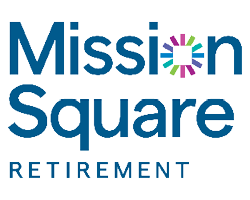Public meetings are where decisions are made, but they’re often seen as unwelcoming, overly formal, or ineffective spaces for two-way dialogue. If you’ve ever left a meeting thinking, there has to be a better way, you’re not alone. Across the country, communities are struggling with raucous meetings. Some have gone one way, which is to disband public comment sections and remove the only opportunity for the public to be heard, namely with a couple of minutes at a microphone. However, some have decided to go in the opposite direction, democratizing existing public meetings by experimenting with new ways to make these gatherings more participatory, productive, and inclusive.
If you want to partner with your city to reformat public meetings, here’s a step-by-step roadmap.
- Review your sunshine laws.
Open meetings laws, often called “sunshine laws,” exist to ensure transparency. But they can also inadvertently create barriers to participation. Start by reading the relevant statutes in your state or city. Look for clauses that restrict specific formats, as well as openings that allow for innovation. Most laws are not prescriptive, but rather broad and open to interpretation and experimentation with public participation. - Choose a pilot meeting type.
Don’t try to overhaul the entire system at once. Identify one type of meeting, preferably one that’s been contentious or has low public trust, and use it as your testing ground. Pilots are easier for cities to approve and less risky to experiment with. - Secure early buy-in from elected officials.
Change is easier when leaders are on board from the start. Schedule one-on-one conversations with council members, mayors, or commissioners. Ask them about their frustrations with current formats and what they’d like to see improved. If possible, encourage them to pass a resolution signaling support for the pilot. - Partner with city staff (without overburdening them).
City staff often juggle multiple priorities. Work closely with engagement professionals, clerks, or department heads, but design your plan so it doesn’t require significant reallocations of their time. - Ground innovations in community research.
Before suggesting solutions, listen to residents. Conduct interviews, run a community survey, and hold listening sessions. Introduce tools like a “meeting scorecard” to enable participants to share real-time feedback. - Share findings in a public forum.
Host a community event where you present the research results and invite attendees to share their thoughts and responses. This step builds transparency and reinforces that residents’ voices are shaping the changes. - Co-create solutions with the internal team.
Reconvene with your core city partners and workshop questions like:
-
- How can we get new people involved?
- How can we make the process more accessible?
- How can we foster two-way dialogue?
- How can we allow asynchronous input?
- How can we close the feedback loop after decisions are made?
Consider where you can incorporate digital engagement, include translation, facilitate structured small-group face-to-face conversations, reconfigure the space to mitigate power dynamics, create learning opportunities that involve more than just speaking, and ensure that there are people in the room who tend not to participate.
- Iterate and make it a habit.
After the pilot, review what worked and what didn’t. Refine the process and look for opportunities to make the new approach a recurring practice. Over time, regular use will create new norms and expectations for public meetings.
The payoff
Reformatting public meetings isn’t just about changing agendas or seating arrangements; instead, it’s about shifting the culture of civic participation with new tools that empower people to feel heard and to address the root causes of contention in many public meetings, which often stem from a lack of meaningful opportunities to engage with elected officials.
When done well, it can transform meetings from adversarial showdowns into collaborative problem-solving sessions, which is precisely what happened in the exemplary case of Boulder, CO’s Community and Council Forum during their Economic Vitality study session that reimagined a public meeting for the first time in its history toward a setup up round table discussions with residents and councilmembers. And that, ultimately, strengthened both the government and the community it serves.
The biggest battle is overcoming fear, initially. Fear from elected officials that innovation will lead to a free-for-all and loss of power. Concern among public servants that the process will only amplify existing strong voices. Fear from the public that changing existing public comments will lead to taking away their voice rather than transforming it more constructively. Fears are palpable because of the long history of problematic experiences and exchanges. However, with the right design, it is possible to navigate these concerns.
The Center for Democracy Innovations is looking for cities interested in becoming a pilot community for the Better Public Meetings project. If you are interested and have questions, contact Nick Vlahos at [email protected].



